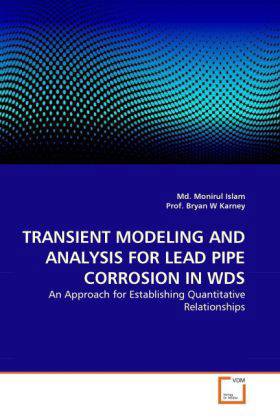
- Afhalen na 1 uur in een winkel met voorraad
- Gratis thuislevering in België vanaf € 30
- Ruim aanbod met 7 miljoen producten
- Afhalen na 1 uur in een winkel met voorraad
- Gratis thuislevering in België vanaf € 30
- Ruim aanbod met 7 miljoen producten
Zoeken
TRANSIENT MODELING AND ANALYSIS FOR LEAD PIPE CORROSION IN WDS
An Approach for Establishing Quantitative Relationships
Md. Monirul Islam, Bryan W. Karney
Paperback | Engels
€ 116,45
+ 232 punten
Omschrijving
Corrosion is a complex phenomenon, and particularly in water distribution systems, when it's already challenging electro-chemical processes are influenced by numerous other physical and chemical factors. Lead pipe corrosion can itself be influenced by both the hydraulic transients and water chemistry events. There are numerous chemical species that contribute to the corrosion processes, but their degree of influences vary widely. From scientific standpoint, quantification of the influence of each chemical species, in addition, the change in degree of influence due to variation in the concentrations, on corrosion processes is critically important. For such investigation, integrated numerical transient- corrosion modeling and comprehensive analyses of the data are required. In this research, to understand the quantitative relationships among hydraulic transient, dominant chemical & material processes, a coupled transient-ADR model is applied for analyzing the transient induced lead pipe corrosion behaviors for a range of options and establishes quantitative interrelationships among the key parameters through comprehensive analyses.
Specificaties
Betrokkenen
- Auteur(s):
- Uitgeverij:
Inhoud
- Aantal bladzijden:
- 272
- Taal:
- Engels
Eigenschappen
- Productcode (EAN):
- 9783639348323
- Verschijningsdatum:
- 29/04/2011
- Uitvoering:
- Paperback
- Afmetingen:
- 152 mm x 229 mm
- Gewicht:
- 404 g

Alleen bij Standaard Boekhandel
+ 232 punten op je klantenkaart van Standaard Boekhandel
Beoordelingen
We publiceren alleen reviews die voldoen aan de voorwaarden voor reviews. Bekijk onze voorwaarden voor reviews.











